Carnival glass was first made in 1908 at the Fenton Art Glass Company. It became popular when it was given away as a prize at Carnivals.
Carnival glass was first produced at the Fenton Art Glass Company in Williamstown, West Virginia. It was first made in 1908 and continued to be popular in the 1920s. Because it was so inexpensive to make, it was given away as prizes at carnivals and often called the ‘poor man’s Tiffany’.
Keep reading to learn more about the history of carnival glass.
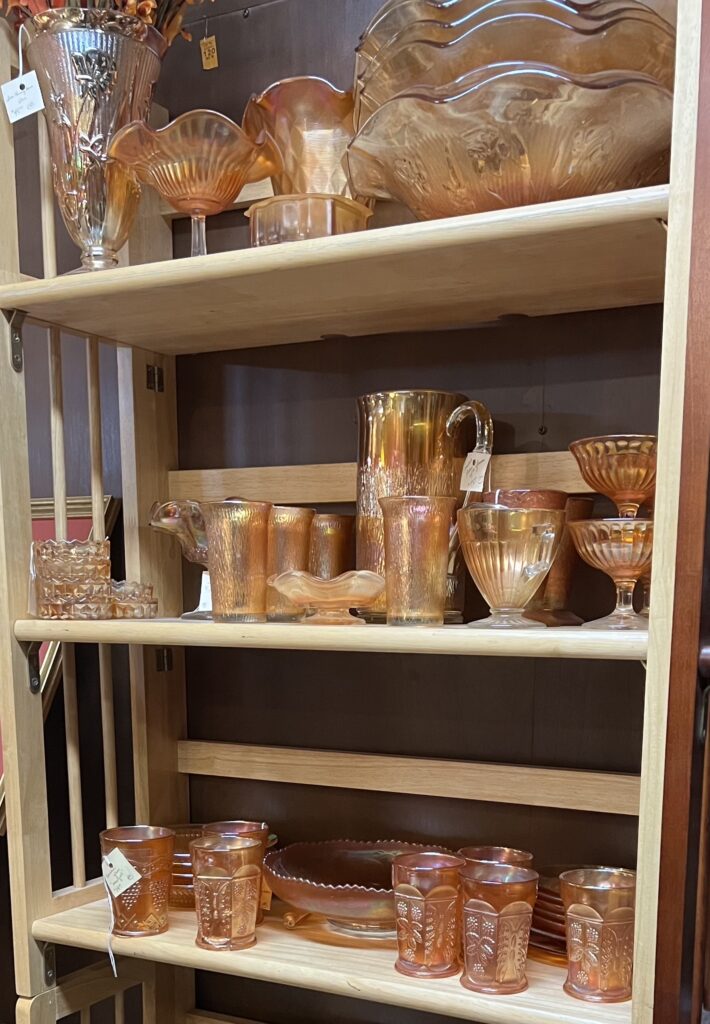
When and Where
The first company to create carnival glass was the Fenton Art Glass Company, but once the glass got popular, Fenton wasn’t the only company to produce it. Besides the Fenton Art Glass Company, there were factories all over the country, and eventually all over the world, that made carnival glass.
Companies that soon followed were Northwood in West Virginia, Millersburg and Imperial in Ohio, Westmoreland in Pennsylvania, and Dugan in Indiana. It was produced and made in the US until the late 1930s. Factories stopped producing it because the interest had moved overseas to Europe in the 1920s and out of the U.S.
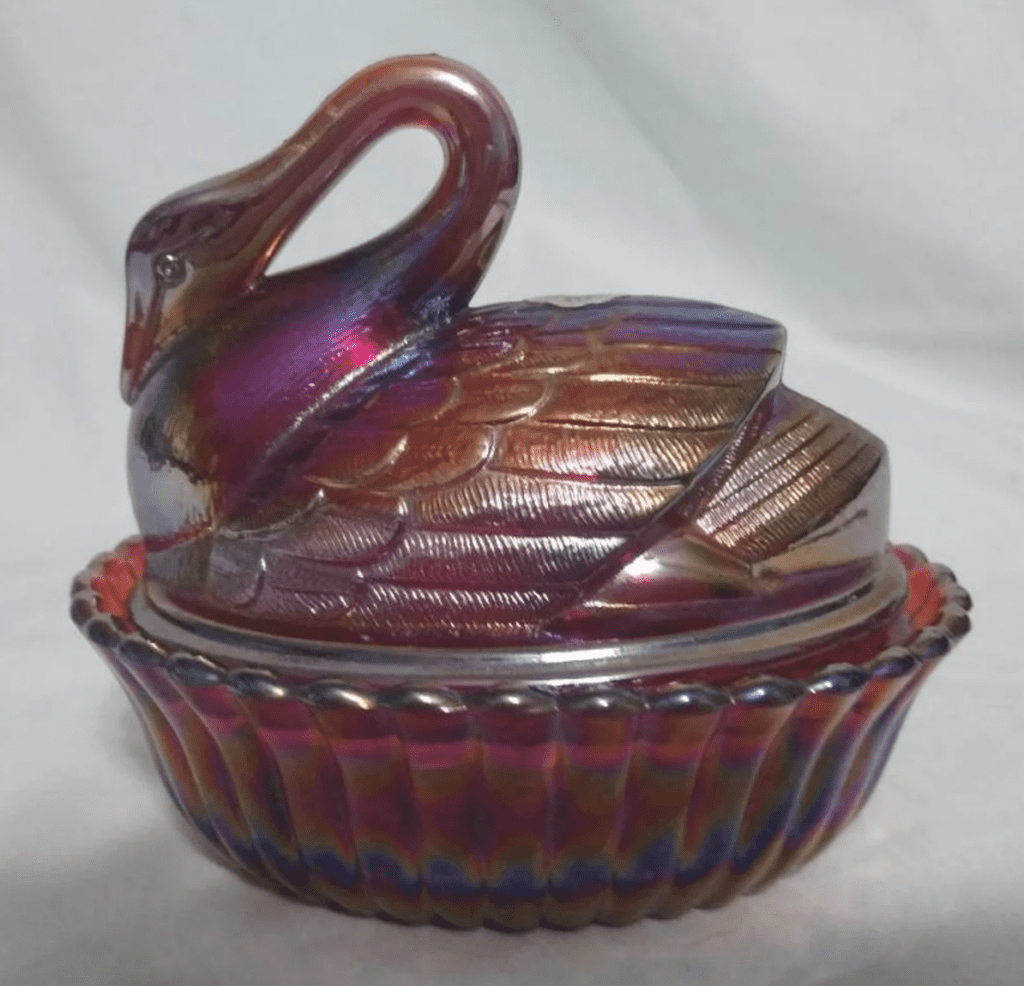
Countries in Europe that carnival glass was sent to include England, Germany, and Czechoslovakia. Europe eventually started making it themselves. In the 1930’s Canada and Australia also started producing it. After the 1930s, production came to a stop. It wasn’t until the 1950’s that collectors found it and started taking an interest. Due to this, production of the glass started back up again in the United States. (Source)
How Carnival Glass is Made
Back in the day, carnival glass was made by pouring the molten glass into a mold and letting it cool. Once the molding was done, it was reheated so that it was hot enough to be shaped. This makes each piece of carnival glass unique, since it is finished by hand and not fully made by a machine. Before it cools down again, the metallic finish is sprayed on it.
The metallic finish is what gives the glass its rainbow, shimmery appearance as well as its iridescent luster. In order for the glass to cool slowly, it is placed in a lehr, a room that helps the glass slowly reach room temperature over the course of 24 hours. The glass is then ready for collectors and buyers to purchase from all over the world. (Source)

How it Became Popular
Carnival glass was not popular right off the bat. Before carnival glass was made, there was another glass called Tiffany’s glass. It was much higher quality and more popular, but it was incredibly expensive. Nobody wanted to buy the carnival glass over Tiffany’s glass.
It was compared to and seen as less than Tiffany’s glass. Collectors called it the ‘Poor Mans Tiffany’ due to its low price. (Source)
It wasn’t until Fenton had the idea to give it away at carnivals that it become popular. He wanted to target groups of people that couldn’t afford high-quality expensive glass like Tiffany’s glass. The carnival was the perfect location.
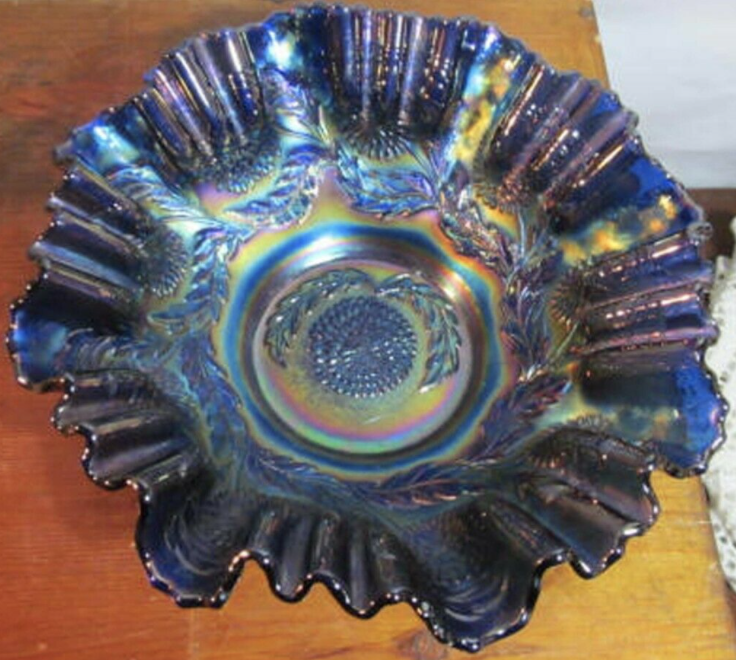
He had the idea to give it away as a prize. He hoped that they would then view the glass as a prize, and want to complete their set of glass. His prediction was right. It soon became very popular and the stigma towards it was over. (Source)
When carnival glass was first produced, it wasn’t called carnival glass. It was called names like Iridill and Rainbow Lustre, due to its look and color. It has several different colors and patterns to choose from. After Fenton had the idea to give it away at the carnival, it then received its popular name. (Source)
After the popularity ended in the United States due to the Great Depression, it become popular on other continents like Europe, Canada, and Australia. They heard of its popularity in the United States and started creating it themselves.
Eventually, the popularity ended everywhere in the 1940s. Carnival glass then became popular in the 1950s, when collectors were drawn to its many colors and shiny finish. They saw value in it that people hadn’t seen before.
It even became popular enough for manufacturers to start production again. Once production started for a second time, new patterns and colors were introduced in order to differentiate between older and newer glass pieces.
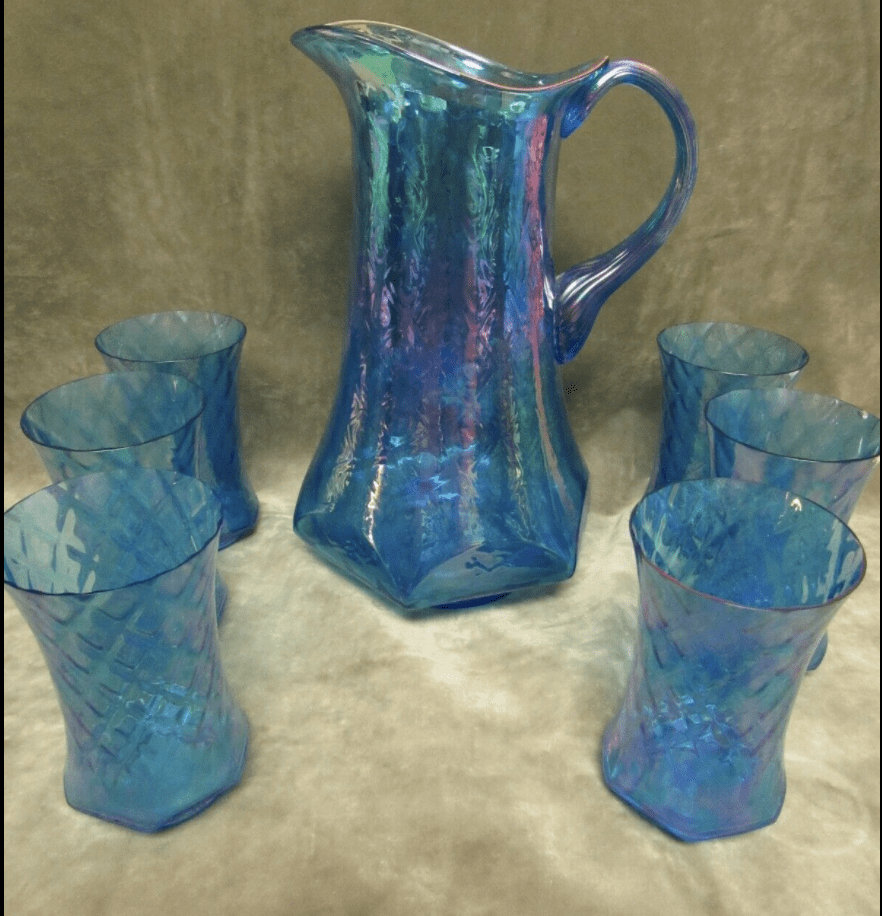
How Carnival Glass is Used Now
Today, carnival glass is seen as highly valuable by collectors. They are very particular with what glass they buy and make sure to differentiate between carnival glass and other kinds. It can be tricky to identify it. The first step is to check for its shimmery and iridescent finish.
The base of the glass shouldn’t have a shimmery look like the rest of the piece or weigh too much. Also, look for the manufacturer’s mark, but not all companies put their mark on their pieces back in the day. You can tell how old the glass is by how rusty it is. The glass will age over time.
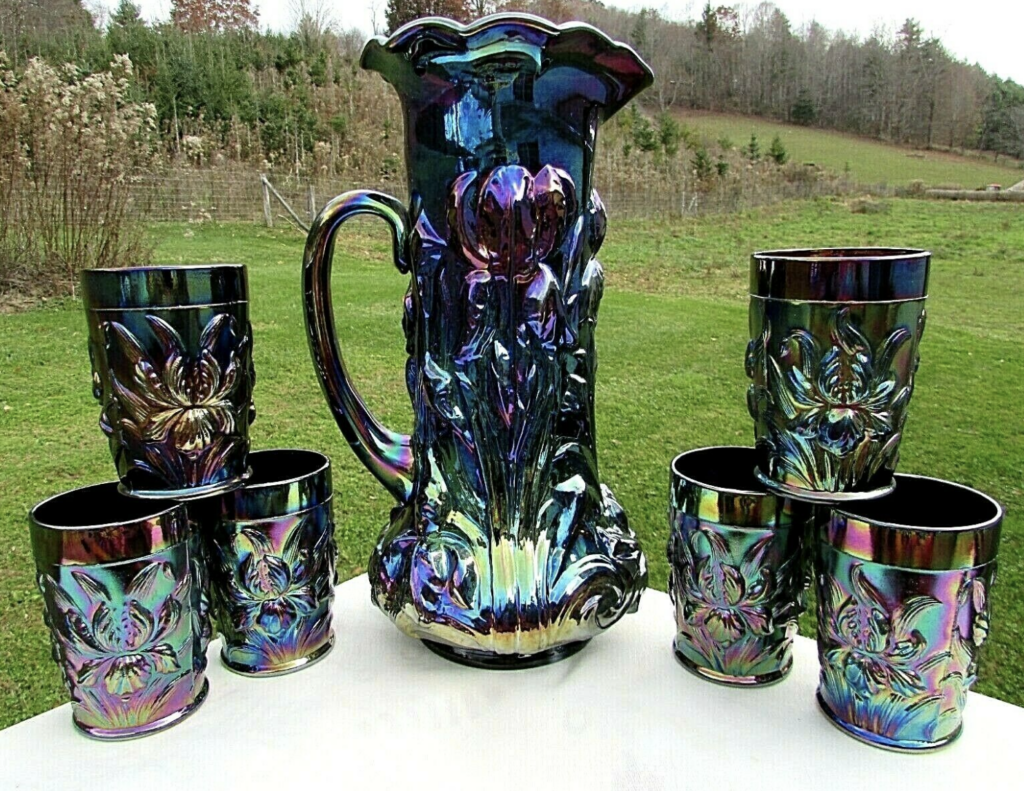
There is also a way to look up the patterns and colors of carnival glass. There are so many different kinds, and you can often find a guide online. Then compare the piece with the guide, looking for any similarities. Colors include Marigold, Amethyst, Red, Amber, Blue and Peach Opal. As far as patterns go, there are over 2,000. The basic part of the pattern was done by machine, but it was finished by hand, making each piece unique and hard to duplicate. (Source)
Carnival glass can be pretty expensive, but you can find some pieces for a few hundred dollars. Many collectors use them as decorative pieces throughout their house, and some are used in the kitchen as serving bowls or plates.
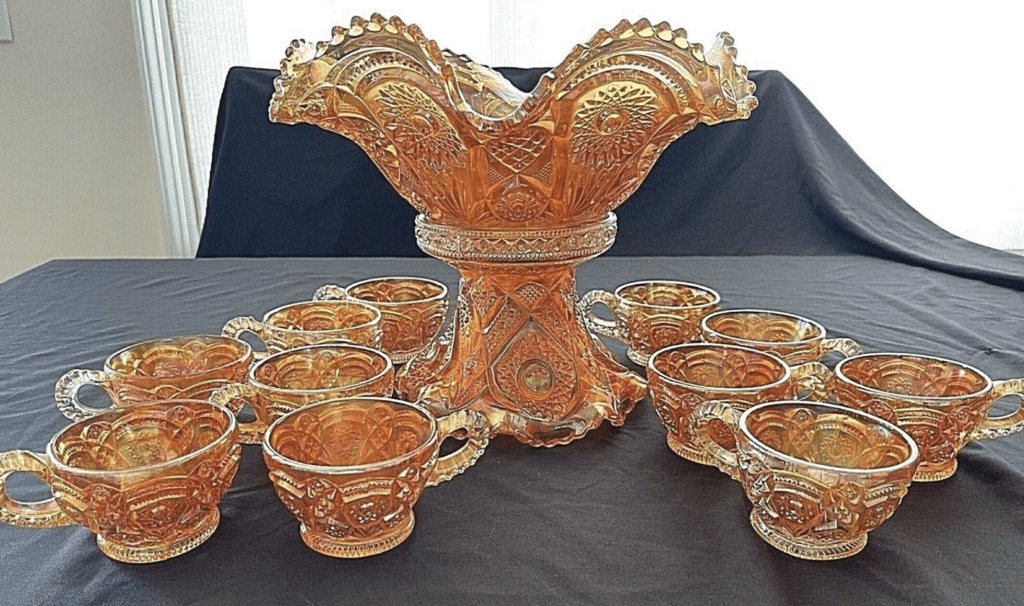
Homeowners love decorating their houses with carnival glass because it is extremely colorful and shiny, especially when compared to other glass decorations.
Carnival glass isn’t being produced very much anymore. It is mostly older pieces that are collected and exchanged between buyers. Carnival glass is valuable because of its history and unique look, not because it is of actual physical value.

